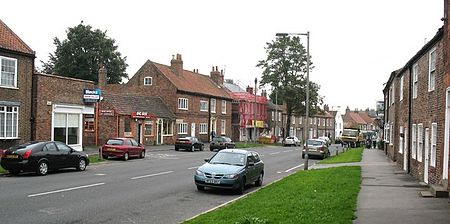Fulford, North Yorkshire

Fulford is a historic village and civil parish on the outskirts of York, in the York district, in the ceremonial county of North Yorkshire, England. Fulford is located 2 miles (3 km) to the south of the city, on the east bank of the River Ouse. The population of the civil parish at the 2011 census was 2,785. It is home to Imphal Barracks, headquarters of the British Army's 15th Infantry Brigade; soldiers and their families live in married quarters outside the barracks. Fulford is a headquarters for the Royal Military Police. Fulford was the site of the Battle of Fulford won by the invading Vikings in 1066, a precursor to the nearby Battle of Stamford Bridge lost by the Vikings, and then the Battle of Hastings in Sussex won by the invading Normans in the following weeks.
Excerpt from the Wikipedia article Fulford, North Yorkshire (License: CC BY-SA 3.0, Authors, Images).Fulford, North Yorkshire
Main Street, York Fulford
Geographical coordinates (GPS) Address Nearby Places Show on map
Geographical coordinates (GPS)
| Latitude | Longitude |
|---|---|
| N 53.938 ° | E -1.073 ° |
Address
St Oswalds
Main Street
YO10 4HJ York, Fulford
England, United Kingdom
Open on Google Maps









